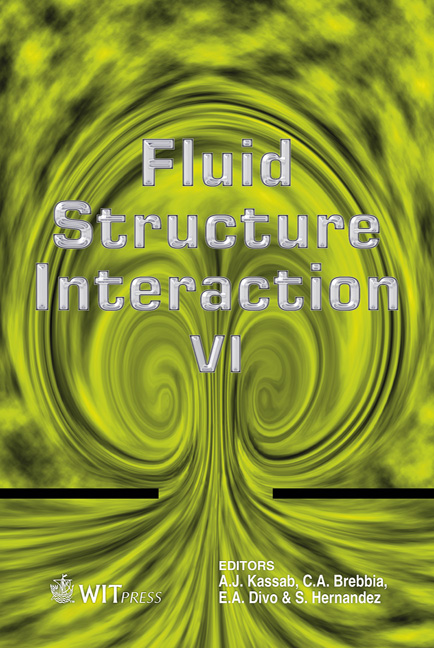Aerodynamic Damping And Fluid-structure Interaction Of Blast Loaded Flexible Structures
Price
Free (open access)
Transaction
Volume
115
Pages
12
Page Range
77 - 88
Published
2011
Size
457 kb
Paper DOI
10.2495/FSI110081
Copyright
WIT Press
Author(s)
M. Teich & N. Gebbeken
Abstract
This paper analyses the effects of air-structure interaction and derives a new coupling model for systems subjected to weak blast loads. While the coupling effects are negligible for typical steel or concrete structures, they may dominate the dynamic response of lighter and more flexible systems like membranes, blast curtains or cable facades. For these systems, a classical decoupled analysis, i.e., neglecting the influence of the surrounding air, might significantly overestimate the deflections and strains. The results of parameter studies are presented, and recommendations for the blast resistant design of flexible protective structures are given. Keywords: aerodynamic damping, blast-structure interaction, flexible protective structure. 1 Introduction The military has extensive knowledge and experience in protective design against blast and weapon effects. With increasing terrorist threats this knowledge is transferred to civilian applications [1]. Military protective structures like bunkers are often build with highly reinforced concrete. At the same time, civilian architectural trends head towards transparent, light and flexible structures like large cable net facades or membranes. Military methods and procedures, e.g. [2, 3], which are valid for the blast analysis of heavy and massive structures cannot be used in these cases. This paper contributes to a better understanding of the interaction of blast waves with light and compliant systems. In the following Section 2, aerodynamic damping effects are illustrated. Then, in Section 3, we derive an analytical single degree of freedom (SDOF) fluid-structure interaction (FSI) model valid for the analysis of weak blast waves with linear or
Keywords
aerodynamic damping, blast-structure interaction, flexible protective structure





